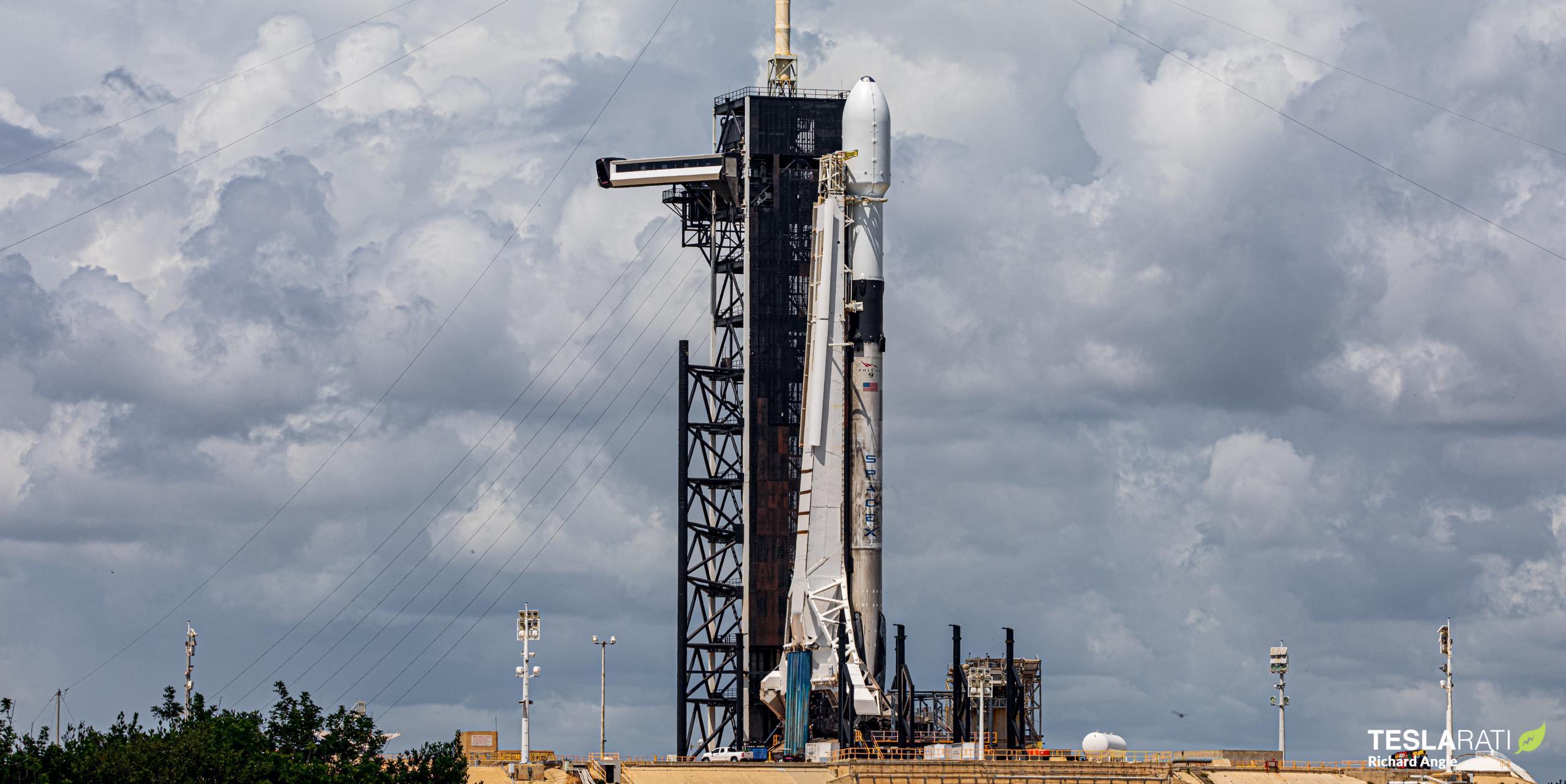

News
SpaceX readies 4th Falcon 9 booster for 10th launch and landing [webcast]
Update: SpaceX has delayed Starlink 4-6 and Falcon 9 B1060’s tenth launch and landing to a backup window scheduled no earlier than (NET) 9:02 pm EST, Tuesday, January 18th (02:04 UTC 19 Jan).
Initially aiming for January 17th, SpaceX pushed the mission to 7:04 pm EST, January 18th for “more favorable weather conditions for liftoff and booster recovery.” A backup window two hours later on the same day was likely selected for similar reasons. Tune in around 8:45 pm EST (01:45 UTC) to watch Falcon 9 B1060’s tenth launch and landing attempt live.
Four days after Falcon 9 B1058 became the third SpaceX booster to complete ten orbital-class launches, the company is set to repeat the feat a fourth time.
Unofficially revealed by airspace and maritime safety alerts on January 12th, SpaceX has confirmed plans to launch Starlink 4-6 – another batch of 49 laser-linked V1.5 satellites – no earlier than (NET) 7:26 pm EST, Monday, January 17th (00:26 UTC 18 Jan) from Kennedy Space Center Pad 39A. The same pad supported an identical launch (Starlink 4-5) on January 6th, requiring a brisk 11-day turnaround for a pad that’s all-time record is two Falcon launches in 10 days.
While technically “just” another Starlink launch, the mission will mark the first time two Falcon 9 boosters have launched for the tenth time back to back. On January 13th, Falcon 9 B1058 helped deliver 105 small rideshare satellites to orbit, completing its tenth successful launch and landing in the process. While there are only two other ten-flight boosters to compare against, B1058 crossed the milestone more than a third faster than either of its siblings, launching ten times in 19 months or once every ~59 days for the duration of its life.
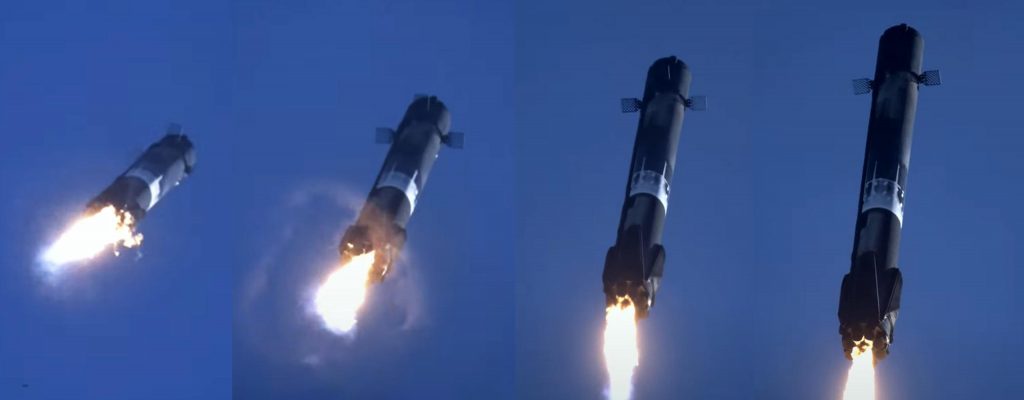
When Falcon 9 B1060 lifts off with Starlink 4-6 on January 17th, 2022, it will do so in 18 months (~81 weeks), beating B1058’s days-old record (19 months or ~85 weeks) by about a month. Though there are several younger, less-flown boosters in SpaceX’s current Falcon fleet, none of them appear to be on track to more than marginally beat or match the records about to be set by B1058 and B1060. Based on SpaceX’s twice-achieved 27-day Falcon 9 turnaround record, it might technically be possible for the same booster to complete 10 launches in as few as 270 days (~39 weeks), employees have described those record turnarounds as “a mad rush” – probably not a sustainable pace for the current workforce, in other words.
Nonetheless, even if evidence continues to grow that the current iteration of Falcon Block 5 boosters are unlikely to average more than one launch every 50-60 days over their lives, SpaceX could still theoretically achieve an eyewatering launch cadence. For example, if SpaceX’s current fleet of nine operational Falcon boosters (including one converted Falcon Heavy core) can each achieve an average of one launch every 60 days starting now, SpaceX could feasibly launch more than once per week or ~54 times per year. If SpaceX also converts Falcon Heavy core B1053 into a Falcon 9, damaged Falcon 9 booster B1069 is able to enter the fleet, and the average turnaround time drops to 50 days, that 11-booster fleet could support up to 80 launches per year.
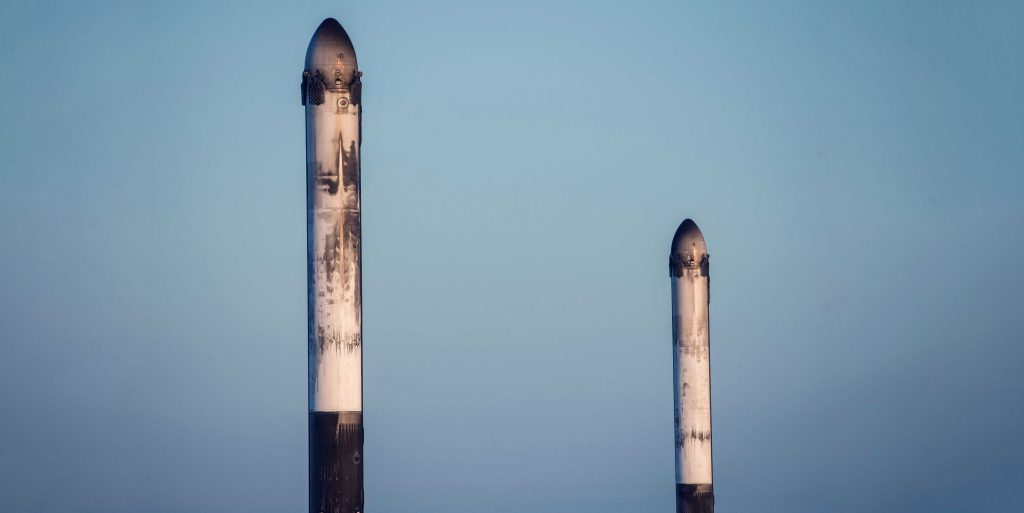
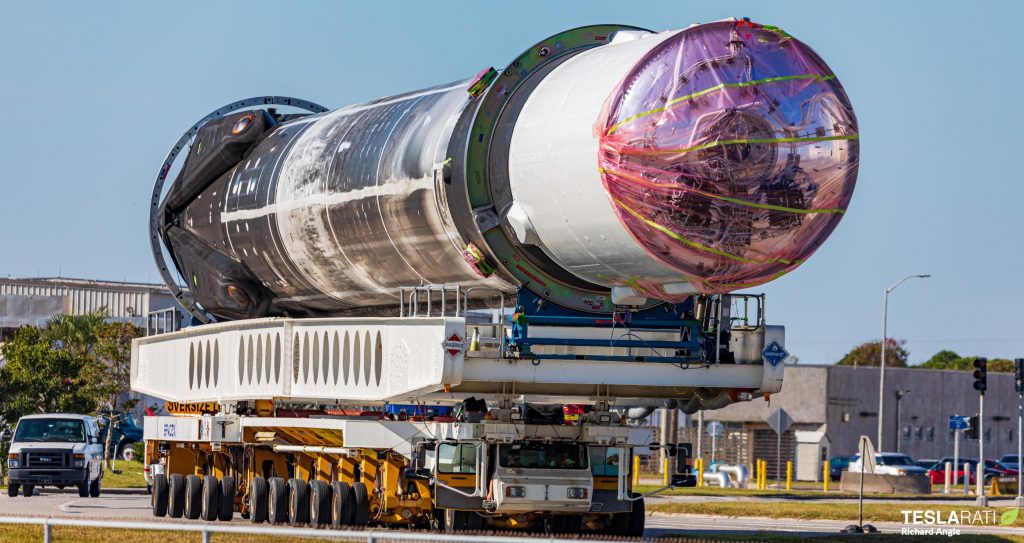
SpaceX’s three Falcon launch pads could theoretically support up to 90 launches per year if every single turnaround was as fast as each pad’s all-time record and no extended downtime was ever needed. In other words, in spite of just how far the Falcon Block 5 design appears to be from CEO Elon Musk’s long-stated dream of daily reuse, a fleet of just 15 Block 5 boosters averaging a conservative 60 days per launch could achieve an annual cadence that would force SpaceX to upgrade its launch pads to go any higher.
With Starship on the horizon, though, it’s no longer clear that SpaceX actually wants to push the Falcon family’s envelope to the point that another round of significant vehicle or pad upgrades are required. Unless Starship suffers catastrophic setbacks causing years of delays, it’s more likely than not that the Falcon family will peak around 60 launches per year (still incredibly impressive) before its likely retirement.
News
Tesla Robotaxi has already surpassed Waymo in this key metric
Tesla Robotaxi has already overtaken Waymo in Austin in one key metric, but there’s still more work to do.

Tesla Robotaxi has already surpassed Waymo in one extremely important key metric: size of service area.
Tesla just expanded its service area in Austin on Monday morning, pushing the boundaries of its Robotaxi fleet in an interesting fashion with new capabilities to the north. Yes, we know what it looks like:
🚨 Tesla’s new Robotaxi geofence is…
Finish the sentence 🥸 pic.twitter.com/3bjhMqsRm5
— TESLARATI (@Teslarati) July 14, 2025
The expansion doubled Tesla Robotaxi’s potential travel locations, which now include the University of Texas at Austin, a school with over 53,000 students.
The doubling of the service area by Tesla has already made its travel area larger than Waymo’s, which launched driverless rides in October 2024. It became available to the public in March 2025.
According to Grok, the AI agent on X, Tesla Robotaxi’s current service area spans 42 square miles, which is five square miles larger than Waymo’s service area of 37 square miles.
Tesla Robotaxi (red) vs. Waymo geofence in Austin.
Much can be said about the shape… but the Robotaxi area is now ~3.9 mi² (10 km²) larger than Waymo’s!! pic.twitter.com/dVfh2ODxJC
— Robin (@xdNiBoR) July 14, 2025
The service area is one of the most important metrics in determining how much progress a self-driving ride-hailing service is making. Safety is the priority of any company operating a ride-hailing network, especially ones that are making it a point to use autonomy to deploy it.
However, these companies are essentially racing for a larger piece of the city or cities they are in. Waymo has expanded to several different regions around the United States, including Arizona and Los Angeles.
Tesla is attempting to do the same in the coming months as it has already filed paperwork in both California and Arizona to deploy its Robotaxi fleet in states across the U.S.
As the platform continues to show more prowess and accuracy in its operation, Tesla will begin to expand to new areas, eventually aiming for a global rollout of its self-driving service.
News
Tesla Megapacks arrive for massive battery replacing coal plant
Tesla Megapacks have started arriving on-site to the Stanwell Battery Project, just as Queensland prepares to wind down the Stanwell coal plant.
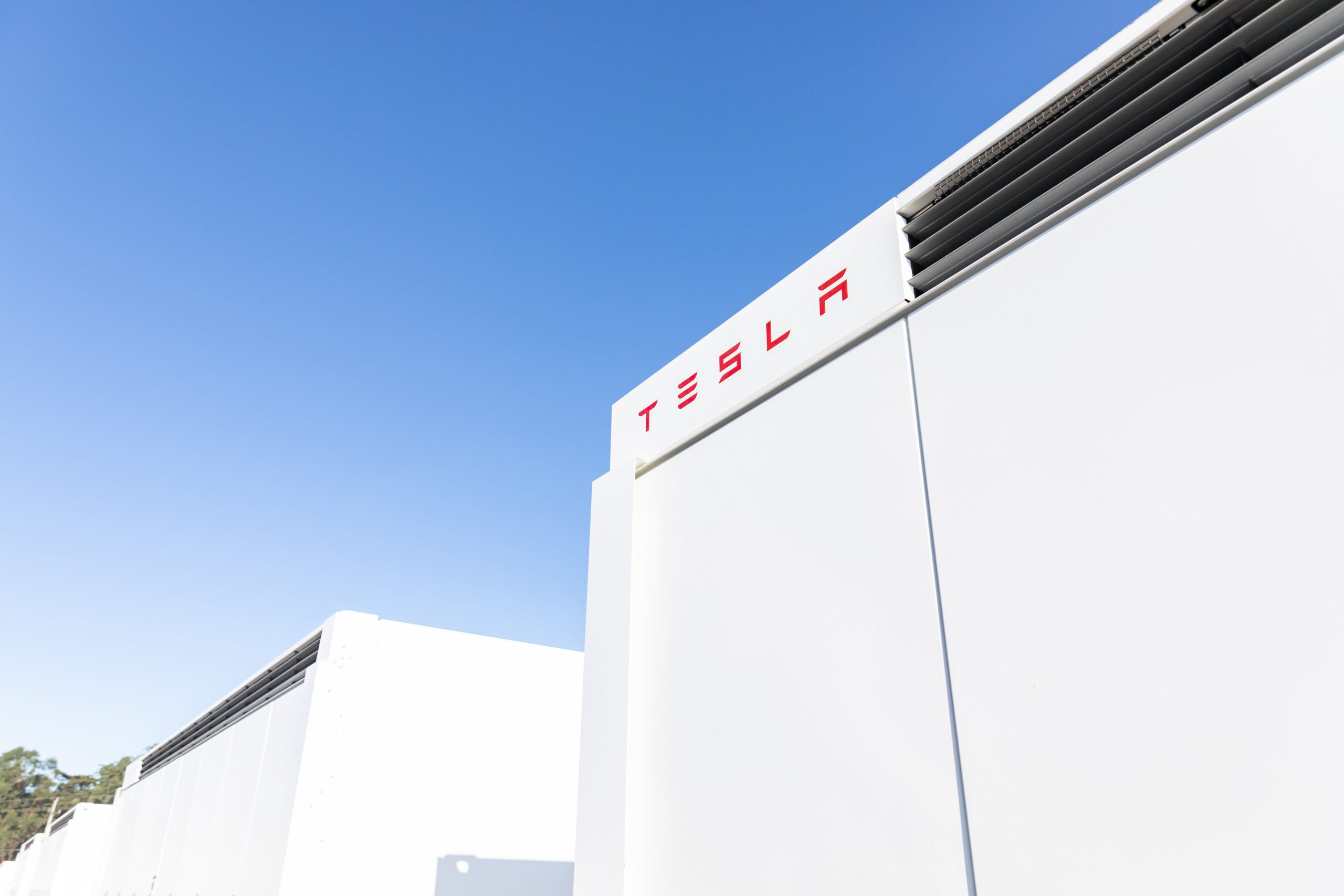
The first of over 300 Tesla Megapacks have arrived to the site of a massive battery energy storage system (BESS) being built in Australia, dubbed the Stanwell Battery Project after a coal plant it’s set to replace.
In a press release last week, the Stanwell Battery Project announced that the first Tesla Megapack 2XL units had arrived to the site, which is located outside of Rockhampton in Queensland, Australia. The project will eventually feature 324 Megapack units, set to arrive in the coming months, in order to support the 300MW/1,200MWh battery project.
“The Stanwell Battery is part of the diversification of our portfolio, to include cleaner and more flexible energy solutions,” said Angie Zahra, Stanwell Central Generation General Manager. “It is just one part of the 800 MW of battery energy storage capacity we have in our pipeline.
“Capable of discharging 300 MW of energy for up to four hours (1,200 MWh), our mega battery will be one of the largest in Queensland.”
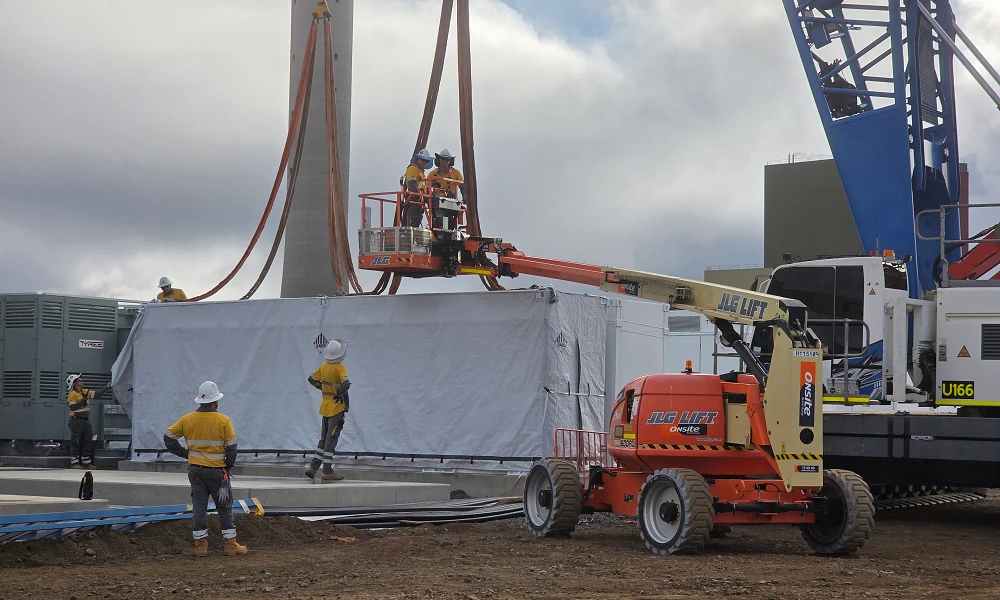
Credit: Stanwell
Did you know Tesla’s Lathrop facility churns out a Megapack every 68 minutes? That’s enough energy to power 3,600 homes for an hour per unit! ⚡️ pic.twitter.com/bG6fpHkB9O
— TESLARATI (@Teslarati) June 11, 2025
READ MORE ON TESLA MEGAPACKS: Tesla Lathrop Megafactory celebrates massive Megapack battery milestone
The state is working with government-owned company Yurika to facilitate construction, and the process is expected to create roughly 80 jobs. The project is expected to come fully online in May 2027, with initial commissioning of the Megapacks aiming for November 2025.
The Stanwell Battery is set to replace the nearby Stanwell coal generation plant, which the government is planning to wind down starting in 2026 as part of efforts to reach an 80 percent renewable energy generation ratio by 2035. Meanwhile, the government is also set to begin winding down the Tarong and Callide coal plants, while several other Megapack projects are being built or coming online. o ya
Tesla currently has two Megapack production facilities, located in Lathrop, California, in the U.S. and another that came online earlier this year in Shanghai, China. The Shanghai Megafactory shipped its first units to Australia in March, while both factories are expected to be capable of producing 10,000 Megapack units per year upon reaching volume production.
News
The Tesla Diner is basically finished—here’s what it looks like
The company first broke ground on the Diner, Drive-in, and Supercharger location in September 2023. Now, it has served one of its first internal customers.

Tesla has finally completed the construction of its highly anticipated Diner, Drive-in, and Supercharger in Los Angeles, and recent photos of the interior’s “retro-futuristic” style are making their way around the internet.
X user Brad Goldberg shared photos from the Tesla Diner site last Tuesday, depicting some of the Supercharger stalls, indoor and outdoor seating areas, multiple neon lights, and even an Optimus robot. Goldberg also noted that there had been a “flurry of activity on site” while he was snapping the photos last week, suggesting that the restaurant location could be getting close to opening.
The Tesla Diner also served one of its first internal customers in the past few days, as Elon Musk posted on X on early Monday morning that he had just finished up eating a meal at the site:
I just had dinner at the retro-futuristic Tesla diner and Supercharger.
Team did great work making it one of the coolest spots in LA!
The photos also show that the site is pretty much done, with some of them even showing vehicles charging at the charging stalls.
You can see some of the latest photos of the Tesla Diner below.

Credit: BradGoldbergMD | X

Credit: BradGoldbergMD | X
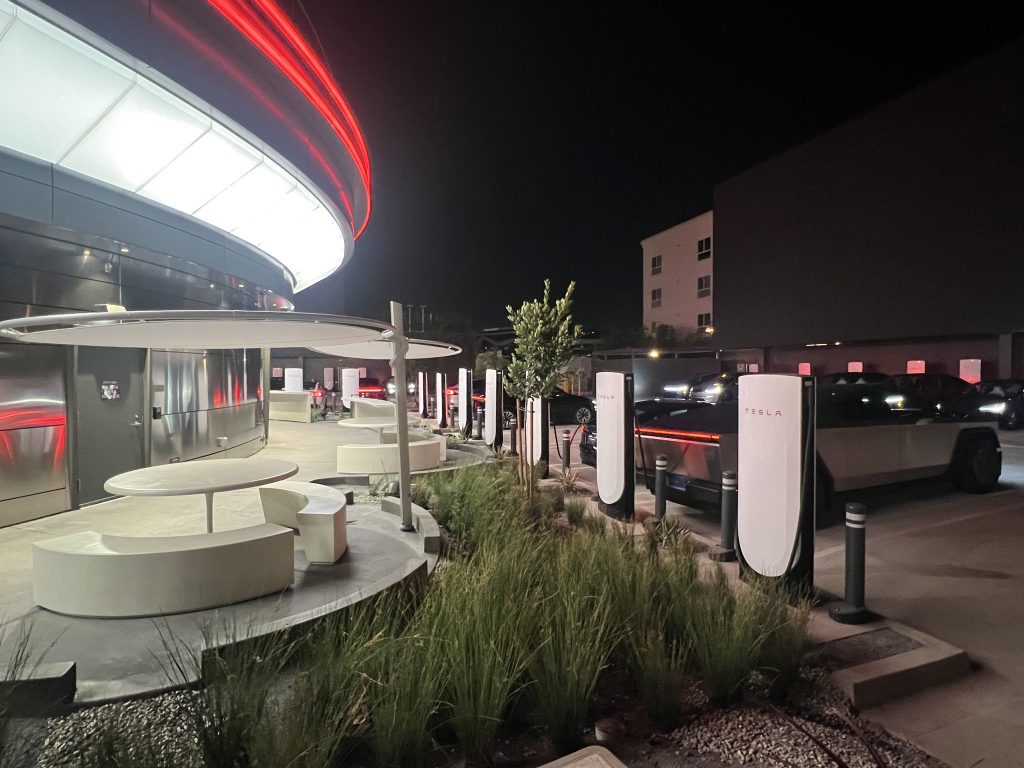
Credit: BradGoldbergMD | X
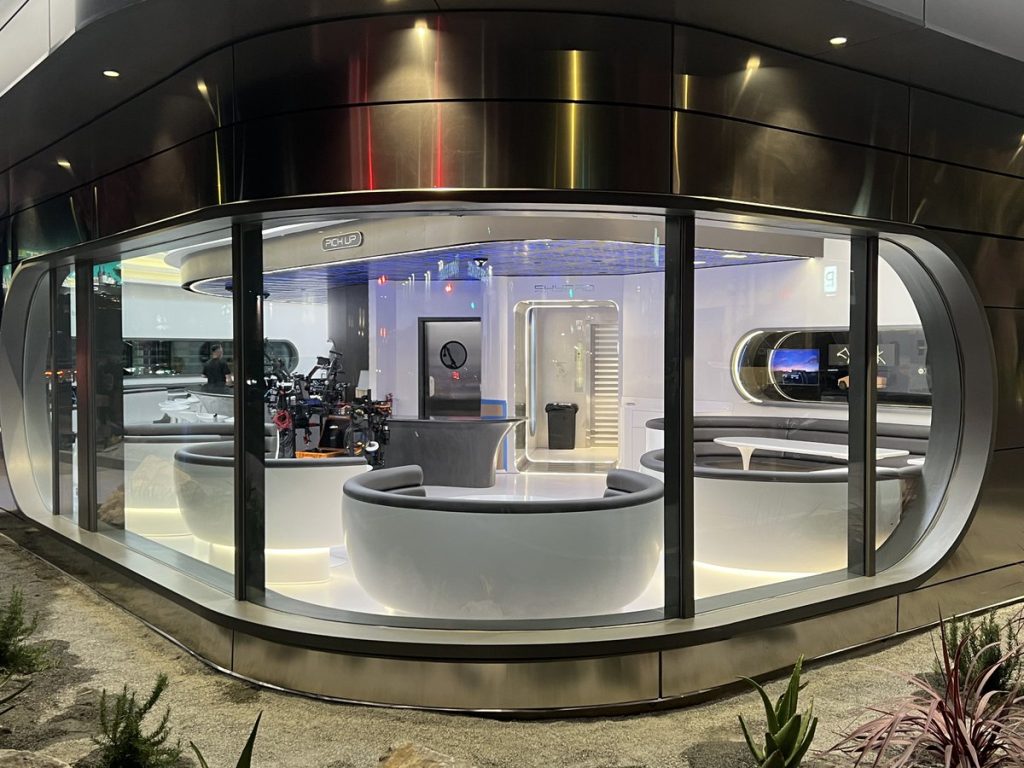
Credit: BradGoldbergMD | X

Credit: TeslaKing420 | X
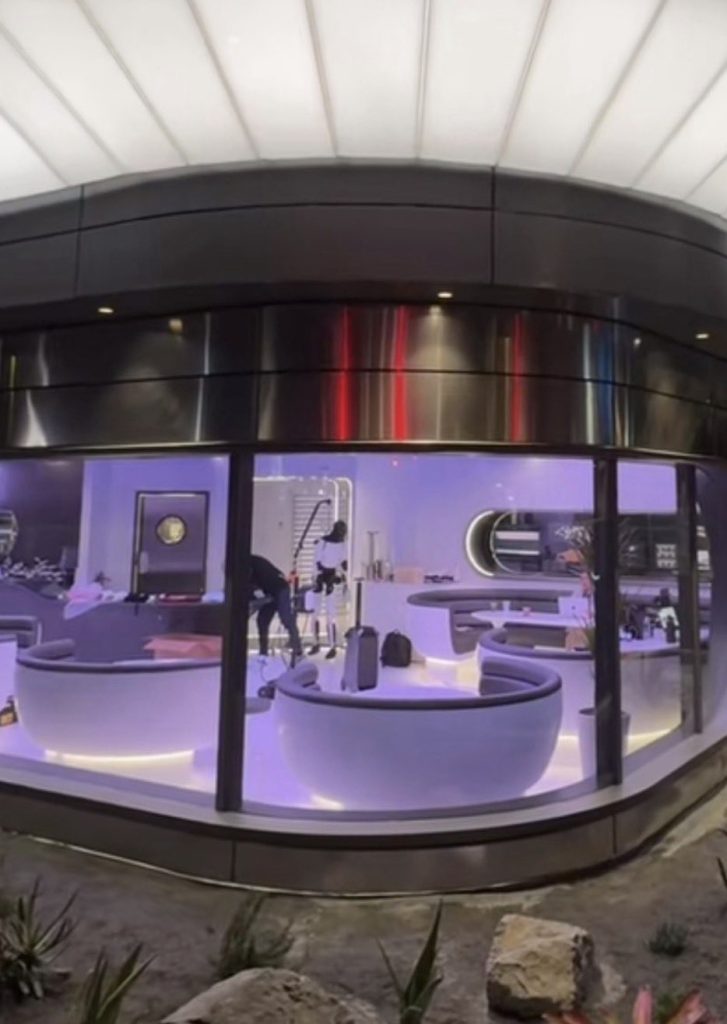
Credit: TeslaKing420 | X
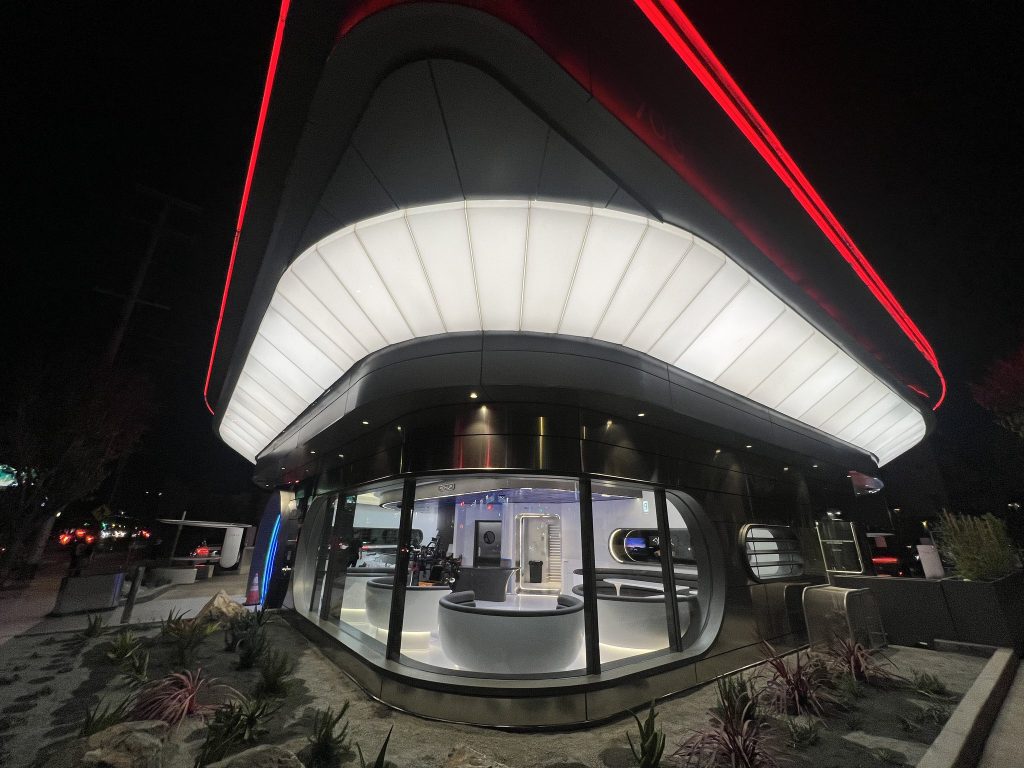
Credit: Brad Goldberg (via Sawyer Merritt on X)
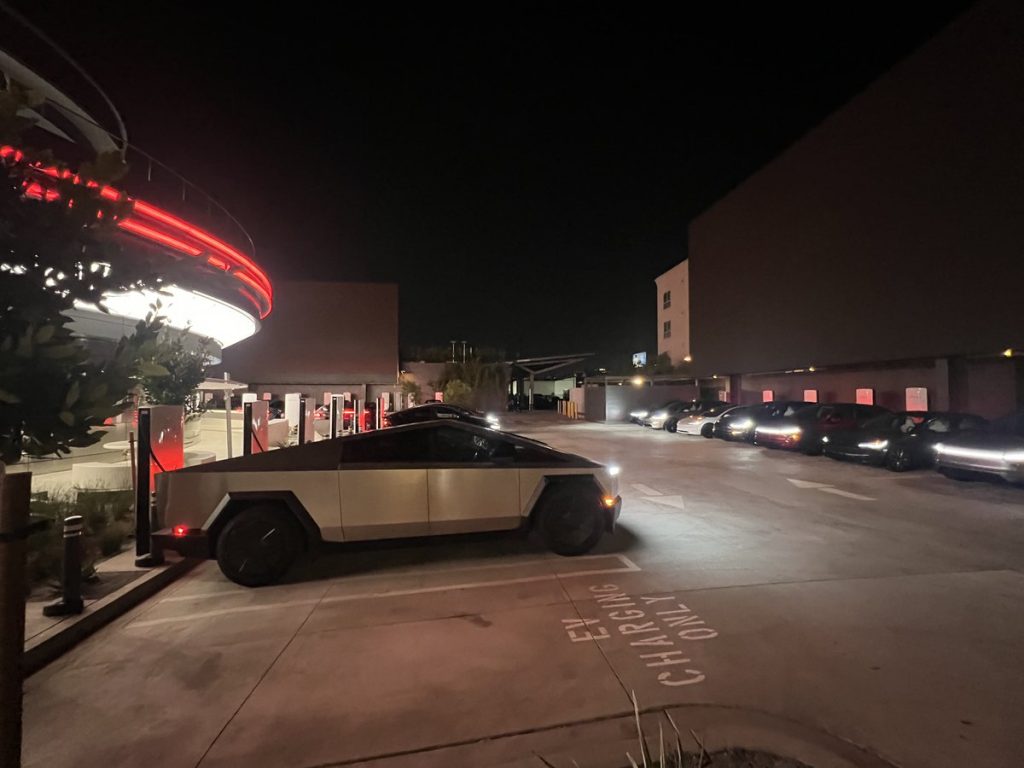
Credit: Brad Goldberg (via Sawyer Merritt on X)

Credit: Brad Goldberg (via Sawyer Merritt on X)

Credit: Brad Goldberg (via Sawyer Merritt on X)
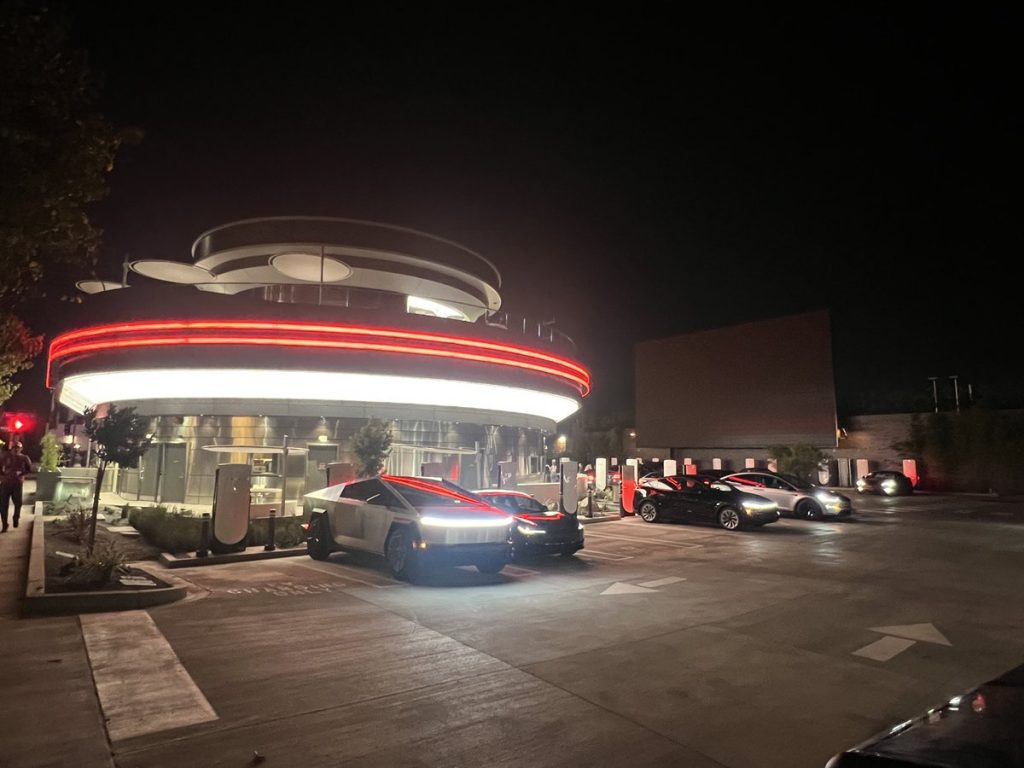
Credit: Brad Goldberg (via Sawyer Merritt on X)
READ MORE ON TESLA’S LA DINER: Tesla readies Drive-In Diner Supercharger for launch with app inclusion
When will the Tesla Diner open to external customers?
While it’s still not open to external customers yet, the news again suggests that the company could be close to an official opening date. Tesla first broke ground on the Diner in September 2023, after receiving a wave of building permit approvals throughout that year. Teslarati also covered much of the construction progress throughout last year, including when crews installed the first and second drive-in screens.
Located at 7001 West Santa Monica Boulevard, the idea was first discussed in 2018 by Musk and a few others on Twitter, featuring 1950s rock and roll, waiters on roller skates, and drive-in movie theater screens playing clips from some of history’s best movies. Notably, the photos of the front doors also show that the site will be open 24 hours a day, 7 days a week, whenever it does end up opening.
Tesla’s progress on Supercharger with diner, drive-in seen in aerial footage
-

 Elon Musk2 weeks ago
Elon Musk2 weeks agoTesla investors will be shocked by Jim Cramer’s latest assessment
-

 News2 days ago
News2 days agoTesla debuts hands-free Grok AI with update 2025.26: What you need to know
-

 Elon Musk4 days ago
Elon Musk4 days agoxAI launches Grok 4 with new $300/month SuperGrok Heavy subscription
-

 Elon Musk7 days ago
Elon Musk7 days agoElon Musk confirms Grok 4 launch on July 9 with livestream event
-

 News1 week ago
News1 week agoTesla Model 3 ranks as the safest new car in Europe for 2025, per Euro NCAP tests
-

 Elon Musk2 weeks ago
Elon Musk2 weeks agoxAI’s Memphis data center receives air permit despite community criticism
-

 News4 days ago
News4 days agoTesla begins Robotaxi certification push in Arizona: report
-

 Elon Musk2 weeks ago
Elon Musk2 weeks agoTesla scrambles after Musk sidekick exit, CEO takes over sales

















